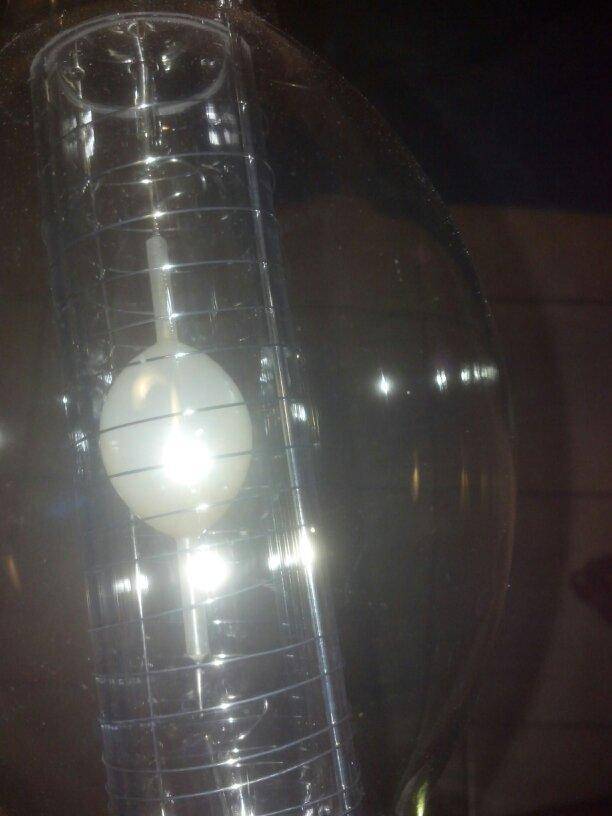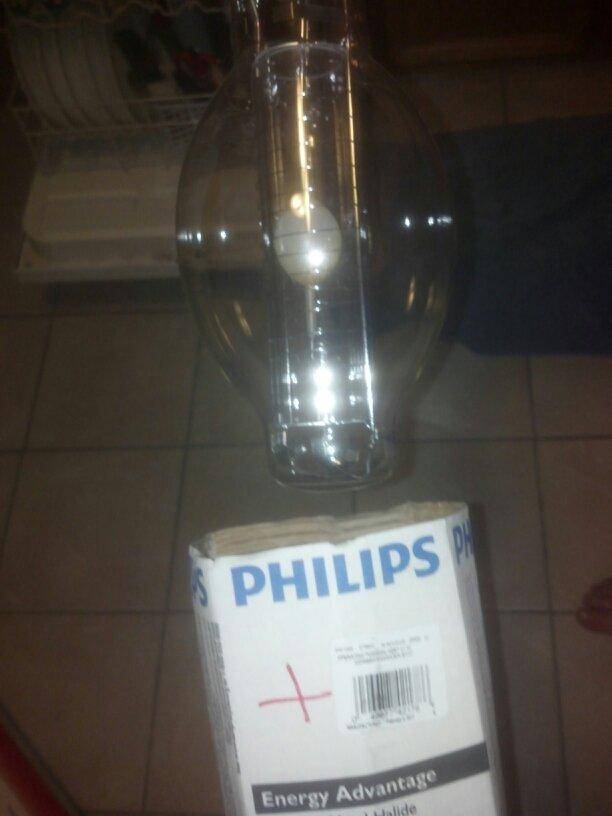I'm so happy to be trying these CMH bulbs out.... 860w bulb, powered by traditional 1kw magnetic ballast for MH (im using a switchable ballast, fwiw) and screws into a regular HID fixture.
They are designed to be hung vertically... so that's what i did with it; hung it vertically in a one light grow that is 6 weeks into flowering and had been perviously powered by a 1k w HPS.
first impression is very nice, the white hue of light is so good for taking photos and much nicer to work in than the HPS orange.
will keep y'all posted on the results using this bulb.
gives


They are designed to be hung vertically... so that's what i did with it; hung it vertically in a one light grow that is 6 weeks into flowering and had been perviously powered by a 1k w HPS.
first impression is very nice, the white hue of light is so good for taking photos and much nicer to work in than the HPS orange.
will keep y'all posted on the results using this bulb.
gives



